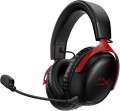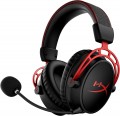Range
Range of wireless-capable headphones (see "Connection type").
When evaluating the range, it should be taken into account that this parameter is rather conditional and the actual range may differ slightly from the claimed one (usually in a smaller direction). So, when connecting via a radio channel, the range is indicated for perfect conditions — without interference and obstacles in the signal path. For Bluetooth models, the range also depends on the power of the Bluetooth module in the device to which the “ears” are connected. And the effectiveness of the IR channel may be reduced in hot weather or in bright sunlight. So when choosing according to this indicator, it's ok to take a certain margin.
On the other hand, there are two points worth noting. Firstly, in general, the specified range accurately describes the capabilities of the headphones, and it is quite possible to evaluate and compare different models with each other. Secondly, even in the most modest wireless “ears”, the communication range is about
8–10 m,
11–20 m is considered an average, and a fairly large number of devices can operate at distances of
tens and even hundreds of metres. So paying attention to the range makes sense mainly in cases where you plan to move away from the signal source at a considerable distance — from 5 m or more — or listen to sound through walls.
Sound
The audio format supported by the headphones.
— Stereo. Two-channel sound that allows you to create a surround sound effect to a certain extent (due to the difference in the right and left channels). The design of the headphones (two speakers, one for each ear) was originally “sharpened” specifically for stereo, so the vast majority of models support this particular sound format.
— Mono. Single-channel sound that does not create a surround effect. This marking means that this model is equipped with
one earpiece ; At the same time, there are two types of such devices on the market. The first is headphones that initially have only one cup and are designed for situations where the second ear needs to be left open (for example, to work on the phone in the office). The second is true wireless devices (see Cable Type), sold singly to replace a lost earphone from the original pair.
— 5.1. Originally, 5.1 was designed to create surround sound that can come from any direction ("surround"). It assumes the presence of 5 main channels (centre, front left / right, rear left / right) and one bass. In headphones, the effect of this sound is achieved through the use of several speakers in each cup. Such models are very convenient when watching movies with multi-channel sound, as well as in games — they provide a powerful immersive effect. On the other hand, such headphones are not cheap, and besides, they require a specifi
...c connection method (for example, via USB).
— 5.1 (virtual). Models with support for 5.1 surround sound (see above), in which the surround effect is achieved not due to the number of speakers, but due to special sound processing technologies. This somewhat reduces the accuracy compared to the "non-virtual" multi-channel, but it can significantly reduce the cost and weight of the headphones. However, there can also be several speakers in such models — for example, for separation by frequency.
— 7.1. The 7.1 format is the multi-channel 5.1 described above, supplemented by two more main channels. The localization of these channels depends on the specific variety of 7.1, but anyway they enhance the effect of volume. On the other hand, full support for this format significantly affects the dimensions, weight and price of the headphones, and content with 7.1 sound is produced much less than 5.1.
— 7.1 (virtual). A “virtual” version of the 7.1 format described above, in which the effect of surround sound is provided primarily through special signal processing, and not due to the presence of separate emitters for each channel. Similar to virtual 5.1, this format of operation somewhat reduces the reliability of the sound, but this difference is often imperceptible, and the headphones themselves turn out to be simpler and more inexpensive. Therefore, most modern 7.1 models support the virtual format of this sound.
— 9.1 (virtual). Further development of the idea of multi-channel sound: 5 channels, as in 5.1 (see above), supplemented by 4 more channels for more accurate localization of audible sound. As in other virtual formats, volume in this case is provided by special processing algorithms.
It is worth remembering that the actual sound will depend not only on the headphones, but also on the signal source: for example, a mono recording even in 9.1 “ears” will not become voluminous.
— 3D sound. Surround sound with the localization of sound sources in three-dimensional space allows you to deeply plunge into the atmosphere of films or immerse yourself in a virtual game world. The mechanics of spatial 3D-sound provides localization of sound sources around the listener and in the vertical scan plane. Algorithms for implementing 3D sound in headphones differ in terms of software and hardware support, but all of them are aimed at achieving the effect of realism of what is happening. Surround sound has long been the standard for movies, and in recent years, 3D sound has become increasingly common in games and music tracks.Impedance
Impedance refers to the headphone's nominal resistance to AC current, such as an audio signal.
Other things being equal, a higher impedance reduces distortion, but requires a more powerful amplifier — otherwise the headphones simply will not be able to produce sufficient volume. Thus, the choice of resistance depends primarily on which signal source you plan to connect the "ears". So, for a portable gadget (smartphone, pocket player), an indicator of
16 ohms or less is considered optimal,
17 – 32 ohms is not bad. Higher values —
33 – 64 ohms and
65 – 96 ohms — will require quite powerful amplifiers, like those used in computers and televisions. And models with a resistance of
96 – 250 ohms and
above are designed mainly for Hi-End audio equipment and professional use; for such cases, detailed recommendations for selection can be found in special sources.
Frequency range
The range of sound frequencies that headphones can reproduce.
The
wider this range, the more fully the headphones reproduce the spectrum of sound frequencies, the lower the likelihood that too low or too high frequencies will be inaccessible. However, there are some nuances to consider here. First of all, let us remind you that the perceptual range of the human ear is on average from 16 Hz to 22 kHz, and for the complete picture it is enough for headphones to cover this range. However, modern models can significantly exceed these boundaries: in many devices the lower threshold
does not exceed 15 Hz, or even
10 Hz, and the upper limit can reach
25 kHz,
30 kHz and even
more. Such wide ranges in themselves do not provide practical advantages, but they usually indicate a high class of headphones, and are sometimes given only for advertising purposes.
The second important point is that a wide frequency range in itself is not a guarantee of good sound: sound quality also depends on a number of parameters, primarily the amplitude-frequency response of the headphones.
Sensitivity
Rated headphone sensitivity. Technically, this is the volume at which they sound when a certain standard signal from the amplifier is connected to them. Thus, sensitivity is one of the parameters that determine the overall volume of the headphones: the higher it is, the louder the sound will be with the same input signal level and other things being equal. However, we must not forget that the volume level also depends on the resistance (impedance, see above); moreover, it is worth choosing “ears” for a specific device first by impedance, and only then by sensitivity. In this case, one parameter can be compensated for by another: for example, a model with high resistance and high sensitivity can work even on a relatively weak amplifier.
As for specific figures, headphones with indicators of 100 dB or less are designed mainly for use in a quiet environment (in some similar models, the sensitivity
does not exceed 90 dB). For use on the street, in transport and other similar conditions, it is desirable to have more sensitive headphones — about
101 – 105 dB, or even
110 dB. And in some models, this figure can reach
116 – 120 dB. and even
more.
It is also worth noting that this parameter is relevant only for a wired connection according to the analogue standard — for example, via a 3.5 mm mini-
...jack. When using digital interfaces like USB and wireless channels like Bluetooth, the sound is processed in the built-in headphone converter, and if you plan to mainly use this kind of application, you can not pay much attention to sensitivity.Speaker size
The diameter of the speaker installed in the headphones; models with multiple drivers (see "Number of drivers"), usually, the size of the largest speaker is taken into account, other dimensions can be specified in the notes.
In general, this parameter is relevant primarily for over-ear headphones (see "Design"). In them, emitters can have different sizes; the larger it is, the more saturated the sound is and the better the speaker reproduces the bass, however, large emitters have a corresponding effect on the dimensions, weight and price of the headphones. But in-ear "ears" and earbuds, by definition, have very small speakers, and rich bass in them is achieved due to other design features.
Harmonic distortion coefficient
The coefficient of harmonic distortion produced by this model of headphones.
This parameter determines the amount of non-linear distortion introduced by the headphones into the reproduced sound. The lower it is, the less such distortions, the cleaner and closer to the original sound is. So, an indicator of 1% or more can be considered tolerable at best, from 0.5% to 1% — good, less than 0.5% — excellent (such indicators are acceptable even for monitor headphones), and less than 0.1% — almost perfect.
Note that a low harmonic coefficient in itself does not guarantee high-quality sound — a lot depends on other features of the headphones, primarily the frequency response.
Frequency range
The range of audio frequencies that the headphone's own microphone can normally "hear".
Theoretically, the wider this range, the more advanced and high-quality the microphone is, the closer the sound transmitted by it is to the real one. In fact, extensive frequency coverage is not always required. So, the working range of the human ear is about 16 – 22,000 Hz, and even then not everyone hears its upper part. And human speech usually covers frequencies from 500 Hz to 2 kHz, at least this range is considered quite sufficient for its transmission. So if you need a microphone for simple tasks like voice communication on the Internet or game chat, you can not pay much attention to the frequency range: even in the most modest models, it is more than sufficient for normal speech transmission.
Sensitivity
The sensitivity of the headphone's own microphone.
The more sensitive the microphone, the higher the signal level from it, at the same sound volume, and the better this model is suitable for picking up quiet sounds. Conversely, low sensitivity filters out background noise. At the same time, we note that these nuances are important mainly in professional work with sound. And for simple tasks like voice communication over the phone or via the Internet, sensitivity does not really matter: in headphones of this specialization, it is selected in such a way as to ensure that the microphone is guaranteed to work.

